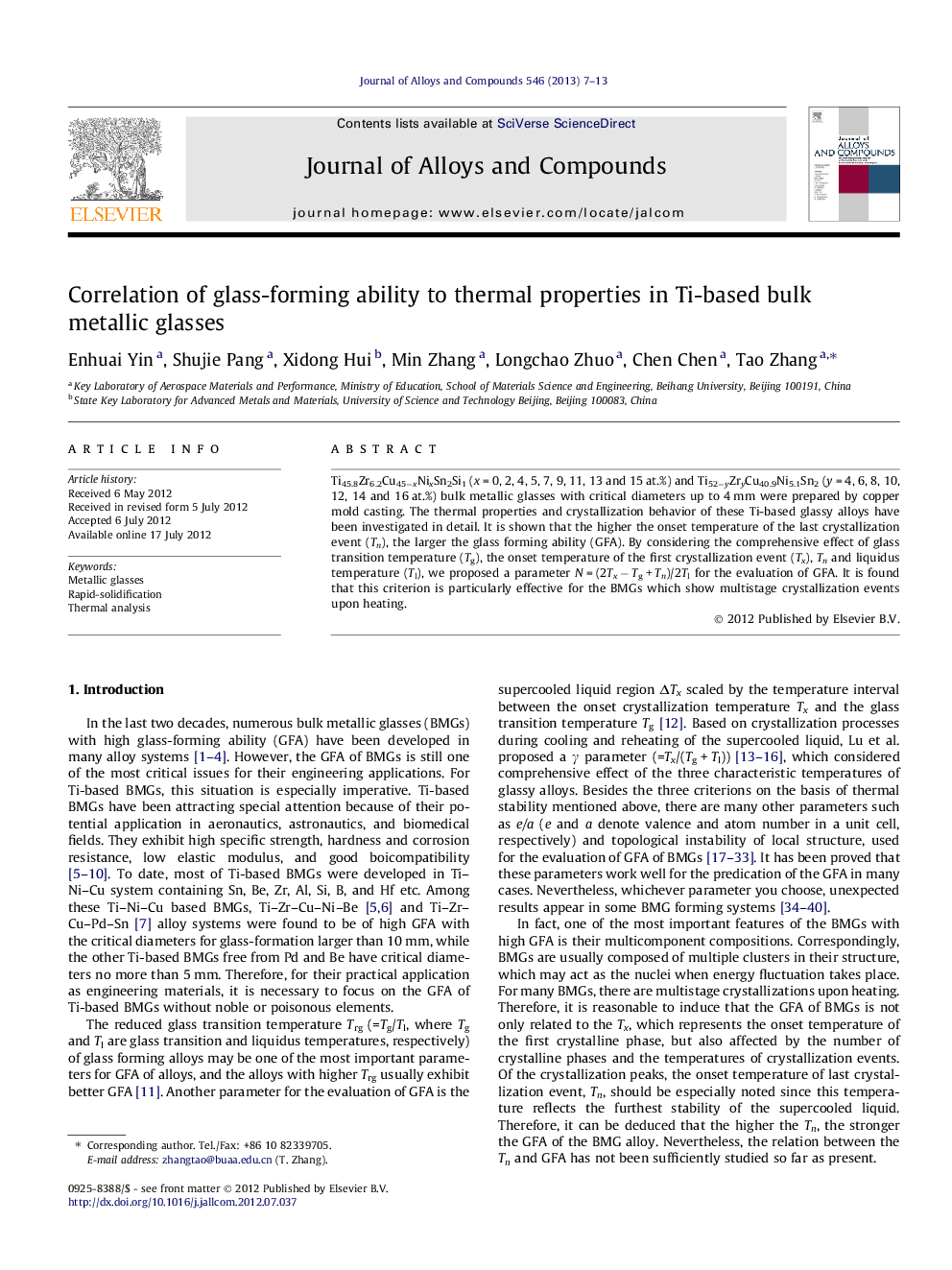| Article ID | Journal | Published Year | Pages | File Type |
|---|---|---|---|---|
| 1615227 | Journal of Alloys and Compounds | 2013 | 7 Pages |
Ti45.8Zr6.2Cu45−xNixSn2Si1 (x = 0, 2, 4, 5, 7, 9, 11, 13 and 15 at.%) and Ti52−yZryCu40.9Ni5.1Sn2 (y = 4, 6, 8, 10, 12, 14 and 16 at.%) bulk metallic glasses with critical diameters up to 4 mm were prepared by copper mold casting. The thermal properties and crystallization behavior of these Ti-based glassy alloys have been investigated in detail. It is shown that the higher the onset temperature of the last crystallization event (Tn), the larger the glass forming ability (GFA). By considering the comprehensive effect of glass transition temperature (Tg), the onset temperature of the first crystallization event (Tx), Tn and liquidus temperature (Tl), we proposed a parameter N = (2Tx − Tg + Tn)/2Tl for the evaluation of GFA. It is found that this criterion is particularly effective for the BMGs which show multistage crystallization events upon heating.
► Ti–Zr–Cu–Ni–Sn–Si and Ti–Zr–Cu–Ni–Sn BMGs were prepared by copper mold casting. ► For Ti-based BMGs, the higher the Tn, the larger the GFA. ► We proposed a parameter N = (2Tx − Tg + Tn)/2Tl for the valuation of GFA. ► The new parameter is effective for predicting GFA of the Ti-based BMGs.
